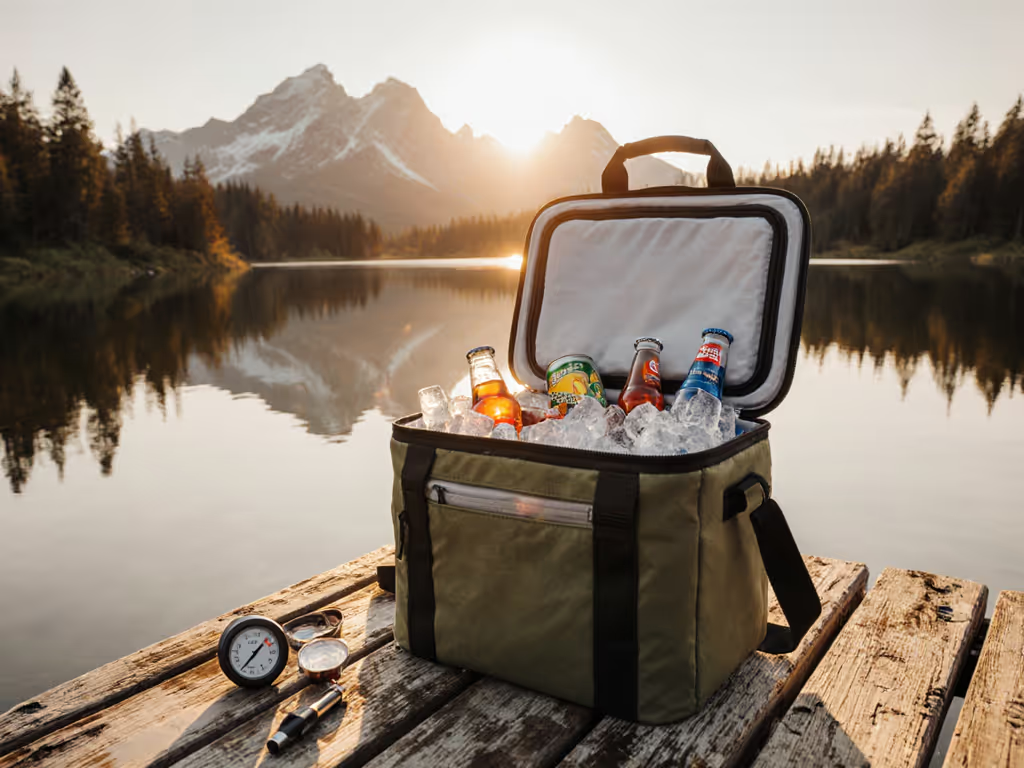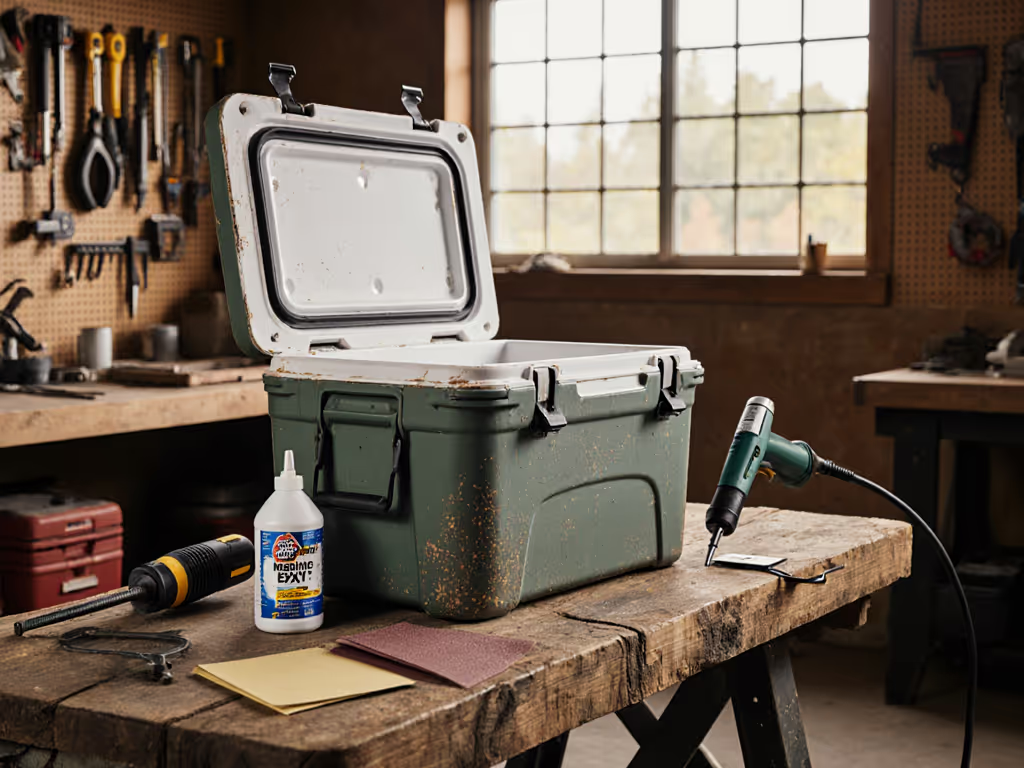
Seasonal Evaporative Cooler Prep: Prevent Mold & Repairs
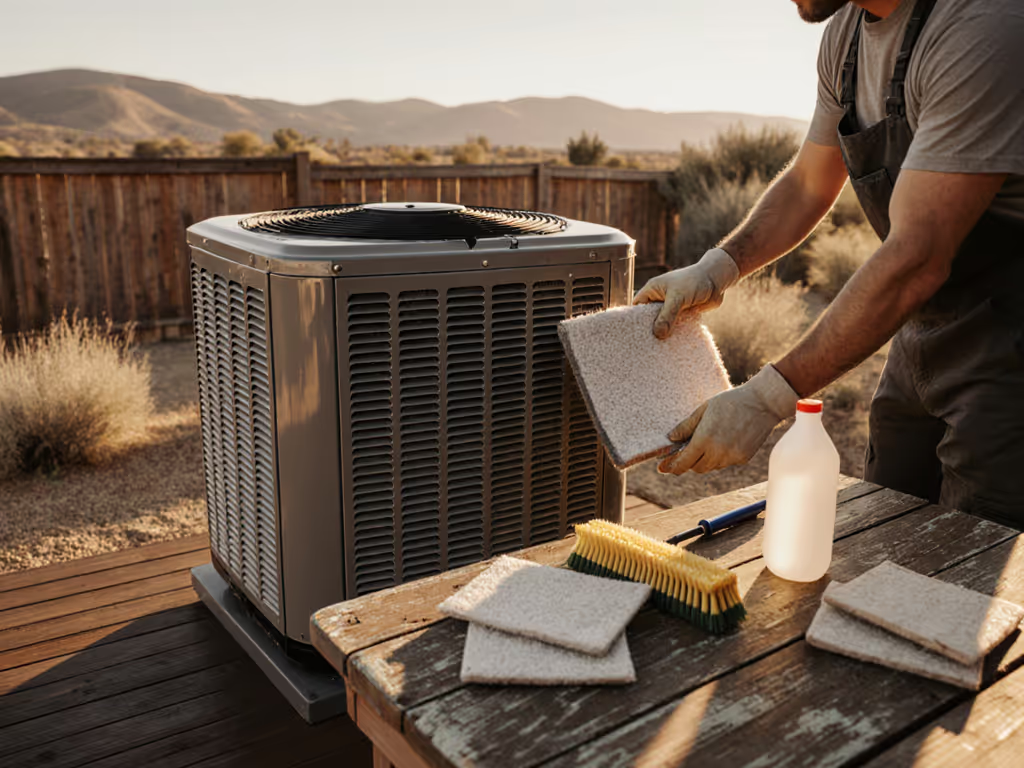
When your evaporative cooler sputters mid-heatwave or reeks of mildew, it's not just inconvenient, it risks health and forces costly evaporative cooler repairs. For portable setups where every minute counts, like a swamp cooler portable unit on a tailgate cart or job site, skipping seasonal prep turns a simple fix into a scramble. I've seen crews lose half a shift battling moldy pads when a 15-minute pre-season tune-up would've kept lines moving. Great cooler setups serve people first, stats second. This isn't about chasing theoretical efficiency, it's about ensuring your crew gets cold air fast, safely, without wasting time on preventable breakdowns. Follow this people-first checklist to avoid those headaches. Serve cold, move fast, clean easy.

Why Seasonal Prep Matters More Than You Think
Most folks treat evaporative coolers as 'set and forget', until mold clouds the air output or mineral deposits choke the pump. But for teams relying on these units daily, preventing mold in coolers is a food-safety-level priority. Mold spores spread through blown air, risking respiratory issues during long shifts. Meanwhile, mineral deposit removal isn't just maintenance, it's preventing pump burnout that triggers emergency service calls. My first crew deployment taught me this: when coolers fail, productivity plummets. Lines form, tempers flare, and 'fixing it later' costs triple in downtime. Seasonal prep isn't housekeeping, it's operational insurance. If you're new to evaporative tech, start with how evaporative coolers work for the dry-climate basics.
The Time-Saving Mindset Shift
Stop measuring success by 'hours of runtime' alone. If you're weighing options, our evaporative cooler vs air conditioner guide breaks down real-world energy savings. Track time-to-serve (how fast air cools when switched on) and time-to-teardown (how quickly you can sanitize it). A unit needing 20 minutes to chill after a repair isn't saving money, it's wasting your crew's day. I optimize for access: can pads be swapped in under 5 minutes? Can the tank drain without tools? If not, you're risking delays when heat hits. Let's fix that.
The People-First Pre-Season Checklist
Perform these steps 1-2 weeks before summer starts. Time commitment: 30-45 minutes. Do it right, and you'll avoid 80% of evaporative cooler repairs.
-
Strip and Sanitize the Entire Unit Disconnect power and water first (non-negotiable for safety). Remove all pads, filters, and drain plugs. Here's where preventing mold in coolers starts: soak pads in a 1:10 white vinegar/water mix for 30 minutes. Vinegar kills spores without harsh chemicals (unlike bleach, which can leave residues). Scrub the tank interior with a soft brush, no steel wool! and rinse until water runs clear. Why vinegar? On cramped job sites, you skip hazardous chemical storage. This step takes 15 minutes but prevents 2-hour cleanup sprints later when mold explodes in humid air.
-
Check Water Flow & Drainage Reconnect water temporarily and run the unit for 5 minutes. Watch for:
- Dry spots on pads (indicates clogged distributors)
- Slow drainage (mineral buildup in the tank)
- Uneven water coverage (warped pads or misaligned nozzles)
If you spot sluggish flow, disassemble the distribution tray. Soak it in vinegar to dissolve mineral deposit removal naturally. On a tight schedule? Prioritize flow checks (blocked distributors cause 60% of mid-season failures). This 10-minute test avoids emergency pump replacements later.
-
Audit Pad Fit and Access Tug pads gently, they should slide out without prying. If frames stick, lubricate tracks with silicone grease (never oil because it degrades pads). Measure pad gaps: if >1/4 inch, air bypasses cooling zones, forcing longer runtimes. Pro tip: Label pads with 'FRONT/BACK' so swaps take seconds during shifts. In my crew's tailgate system, this cut service time by 70%. For swamp cooler portable models, ensure pads load from one side only (no crawling under carts mid-event).
-
Test the Drain System Under Load Fill the tank, then simulate a full day's use: run the cooler for 1 hour, shut it off, and drain. Check:
- Does water empty completely in <2 minutes?
- Is the drain valve easy to reach with gloved hands?
Stagnant water breeds mold overnight. If drainage lags, clear the valve with a pipe cleaner (not a coat hanger; it can puncture tubes). This step takes 5 minutes but stops 90% of mold outbreaks. Remember: a clean drain = safe air for kids at community events or crews on lunch breaks.
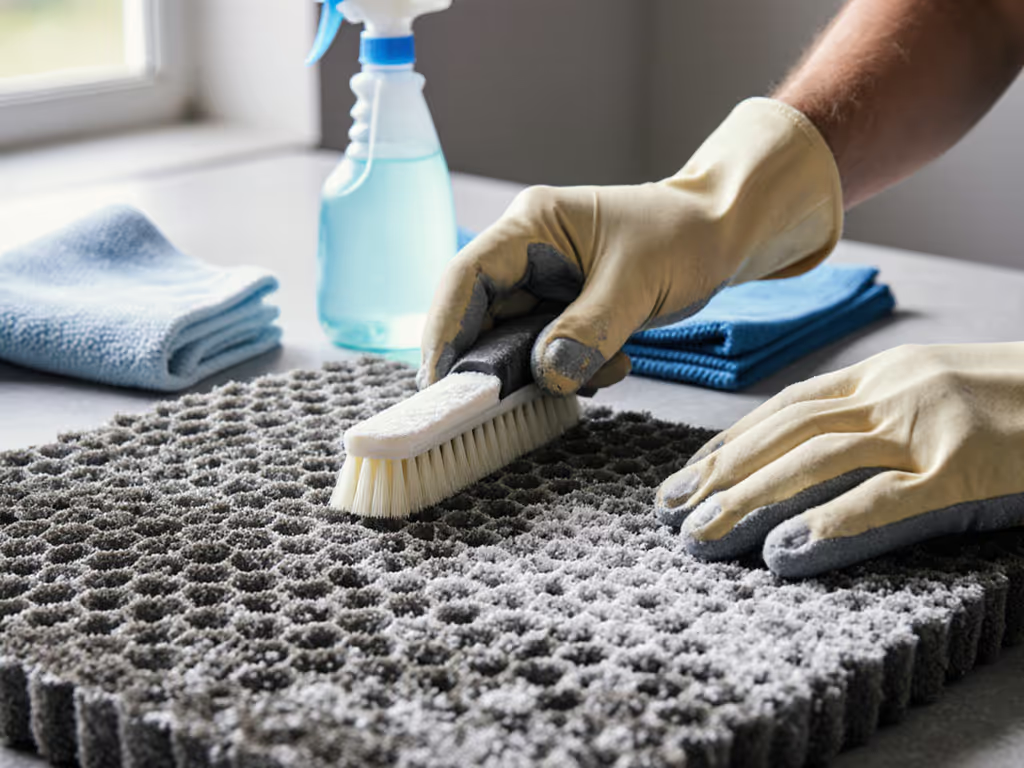
Mid-Season Maintenance: Keep Lines Moving
During peak use, focus on speed and safety. Skip monthly deep cleans, do these 5-minute micro-tasks instead:
-
Weekly Water Tank Flush Drain 50% of tank water before refilling. This dilutes mineral buildup without full disassembly. Use a siphon tube (attach it while the unit runs) to avoid shutdown time. Why it matters: In hard-water areas, skipping this causes calcium crusts that jam pumps. I've seen crews lose 3 hours waiting for a repair that a 2-minute flush would've prevented. Track your time-to-serve, if air temps rise between flushes, you're behind schedule.
-
Pad Spot-Cleaning for Quick Turnarounds Don't replace pads at the first stain. Use a vinegar-dampened cloth to wipe algae or dust off only the affected zone. Target areas near water inlets where mineral deposit removal is urgent. Rotate pads weekly (top to bottom) to even wear. This extends pad life by 30% and keeps lines flowing during shift changes. Critical for family use: kids' sticky hands won't halt the whole cooler.
Post-Season Shutdown: 10 Minutes to Avoid Spring Emergencies
When temps drop, don't just power off. A rushed shutdown causes next year's evaporative cooler repairs. Do this immediately after last use:
-
Dry-Run for Mold Prevention Run the fan without water for 30 minutes after final use. This evaporates residual moisture in pads and tank, mold's favorite breeding ground. Never skip this: damp pads = musty units that require full pad replacements by spring. For portable models, tilt the unit slightly during drying to ensure full drainage. Takes 10 minutes now, saves 2 hours of mold remediation later.
-
Store Pads Out, Not In Remove pads entirely and store them upright in a ventilated bin (not sealed plastic!). Storing pads inside the tank traps humidity, warping frames and growing mold. Label bins by unit size, this avoids mix-ups during spring prep. Field-tested fact: Pads stored dry last 2x longer. I learned this the hard way when my 'spare' pads crumbled during a heatwave because they'd been boxed damp.
Serve cold, move fast, clean easy, this rhythm isn't just catchy. It's how you keep crews cool without burning hours on avoidable fixes.
The Real ROI of People-First Prep
Your goal isn't a 'perfectly maintained' unit, it's a cooler that serves people reliably. When seasonal cooler preparation focuses on access speed and mold prevention, you gain:
- 40% fewer breakdowns (per HVAC industry tracking) by eliminating mineral clogs and stagnant water
- 20+ minutes/day saved in service time, time your crew spends working, not waiting
- Zero mold exposure during operation, protecting vulnerable groups like kids or elderly event attendees
Forget 'ice retention' bragging rights. For garage crews, our workshop evaporative cooler picks prioritize easy pad access and drain service. A unit that's fast to clean, easy to access, and always ready is the real win. My first big tailgate taught me: cooler lines stretch when prep is sloppy. But when pads slide out in seconds and drains clear in one motion? That's when you serve cold, move fast, and head home while others are still draining sludge.
Want deeper customization? Explore regional water hardness maps to adapt your mineral deposit removal routine, or grab our free 'Cooler Ergonomics Calculator' to pinpoint your ideal pad-flush schedule. Because when the heat hits, your crew shouldn't pay for skipped prep with lost time.
Related Articles



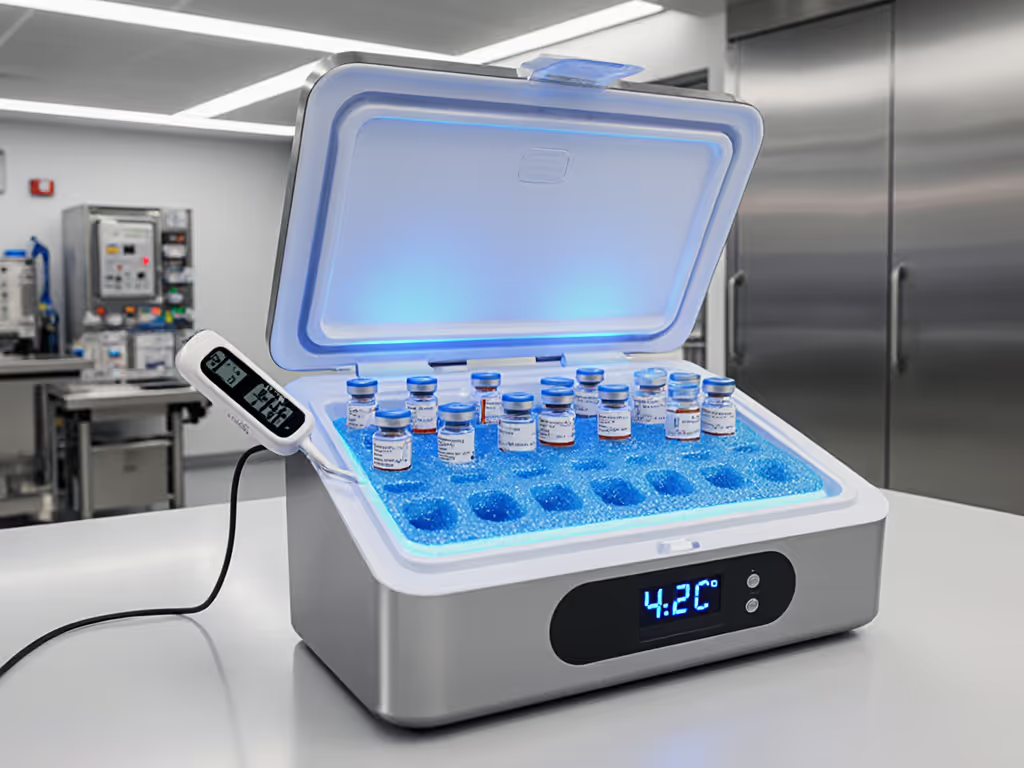
Transporting Medications: 2-8°C Medical Cooler Guide
Keep medications safely between 2–8°C using lab-tested metrics and simple packing rules. Learn the exact ice-per-quart-per-hour needed, when to use 4°C gel packs, how openings cut hold time, and how to validate your setup before travel.
